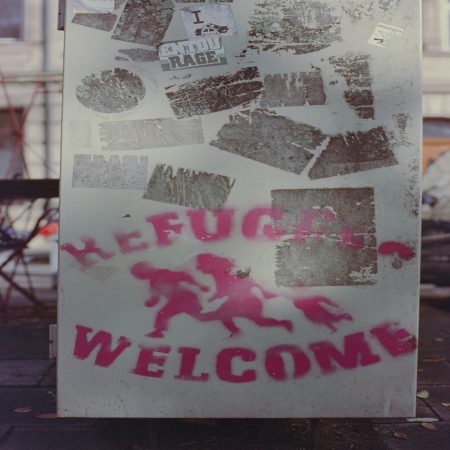When a local resident casually stated that “Winchester has always been a welcoming place of refuge”, as a historian, this immediately aroused my suspicion. The narrative of refuge in Britain has become largely inflated, through both popular and political rhetoric, to bolster a sense of national pride. The truth is, Britain is not, and has not been, a welcoming place for refugees over the last century. Increasingly restrictive immigration policies have branded more and more people “illegal”, with routes to safety impeded by new legislation that criminalises those seeking to help. How then, within this framework, could Winchester be considered a welcoming place of refuge? This is where local histories become so important and revealing. When historians of migration discuss the “hostile environment” of Britain they are often taking a general approach to the national story, considering its history from the top down. But when we consider the history of everyday lives, with regional variations, the picture becomes far more complex.
In 2021, Winchester City Council passed a motion to become a City of Sanctuary. The vision of Sanctuary is to become a welcoming place for all, especially those fleeing violence and persecution. In collaboration with the charitable organisation Winchester City of Sanctuary, I began working on a project to discover and share historical stories of forced migration within the local area. The Winchester Migration History Project (WMHP) looks to embed the ideas of sanctuary within a broader historical context of migration in Winchester and the surrounding areas. Essentially, we intend to explore and share ideas of how forced migration has shaped the local area, and the history of Winchester as a city of refuge. The long-term aim of this project is to understand the movement of people both to and from the Winchester area, along with the experiences of various community groups, to demonstrate that forced migration is not an issue of ‘our time’. The WMHP intends to engage local audiences through events and activities that encourage reflection on our civic responsibility to members of our local communities. We consider notions of empathy and allyship as we work towards greater inclusion, equality, and equity for those seeking sanctuary in Winchester. The WMHP aims to illustrate the long history of both migration and sanctuary, offering an alternative narrative to negative media representations.
This project, inevitably, led me to Hampshire Record Office. Starting with a search of local newspapers, I discovered Winchester boasted a seemingly impressive record for welcoming refugees. A comparison of national newspapers alongside the collection of local newspapers held by Hampshire Archives revealed a very different tone in the reporting of refugee arrivals. Rather than stories of “crises” and “problems”, we see stories of local hospitality and aid. A national story of 225,000 Belgian refugees arriving in Britain following the German invasion of Belgium in 1914 becomes the local story of 300 Belgian refugees welcomed into the homes of Winchester residents. Further searches at the Hampshire Record Office led me to church records offering accounts of care for strangers. I have only just scratched the surface of records held, but I was excited to find material dating back to the eighteenth century. The first named “refugees” came to England following the French Revolution, having been subject to religious persecution. The Protestant Huguenots fled Catholic France and were the first group to be labelled refugees – those seeking religious refuge. The term, however, took on a broader legal function following the Second World War as Europe saw millions displaced, sometimes permanently, from their homes. This has been characterised as a “refugee crisis”, with the legalisation of the term in the 1950s. The concept of a refugee was very different in the past, but there are certainly parallels to be drawn between then and now.

Researching the history of forced migration in the Winchester area intends to offer a historical context for asylum seekers and refugees arriving today. Winchester City of Sanctuary aims to challenge negative stereotypes and rhetoric surrounding forced migration, for which history plays an important role. The notion of a “refugee crisis” is not unique to our time but has been a common theme of the modern world. Most recently, arrivals from Ukraine have dominated the media, but this is nothing new. With a visit to Hampshire Record Office you can learn about Olga Babij, a Ukrainian refugee who arrived in Hampshire in 1946. Local communities have been visibly shaped by migration, and exploring the archives allows us to uncover rich local stories whilst discovering something of our own heritage. Understanding who we are begins with understanding who we were, for which Hampshire Record Office holds many stories.

Author: Dr Emily Styles
Bio: Dr Emily Stiles is Lecturer in Modern History at the University of Winchester where she specialises in the history and representation of forced migration. She is a member of the University’s Forced Migration Network and is collaborating with Winchester City of Sanctuary to create a series of exhibitions on the theme of forced migration.

